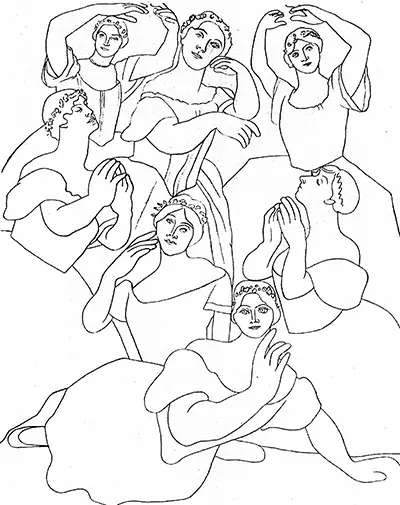The ballerinas seem to be exuberant, though their energy is fairly well contained. This has the effect of making the viewer really happy. Picasso regularly attended celebrations of the arts, such as dance and music. Several of his pieces show the influence that these performances had on him. It is possible that the grace of the dancers caught his attention. In 1918, Picasso married a ballerina, Olga Khokhlova. The summer of that year proved to be the start of a relationship that lasted a long time. While he was not faithful to his ballerina wife, he refused to divorce her.
He met his long time mistress Marie-Thérèse Walter while he was married to Olga. The young woman had never even heard of him, even though Picasso was already famous around the world. An artist whose attention could be drawn by not one but seven ballerinas could not let that deflate his ego. The two of them got together, overcoming differences in social stations, age and more. It was Picasso’s painting come to life. This colourful love affair was one of many that gave him not one, but many ballerinas to admire in his own life.
The Three Dancers has a different style and was painted several years later by Picasso in 1925. Unlike the smooth grace of Seven Ballerinas I, Three Dancers is harsh in its portrayal of the performers. The persons in the latter painting are closer to the artist. This painting is clouded by pain. The Three Dancers portrays part of the dance of life, while Seven Ballerinas I instead reflects the beauty of a performance on stage. The Three Dancers shows three dancers, with the one positioned on the right intentionally being barely visible. What is seen in Three Dancers is a macabre dance. To emphasise this Picasso paints one dancer with her head impossibly bent. This painting is interpreted as being about Ramon Pichot, Pichot's wife Germaine and her boyfriend Carlos Casagemas.

